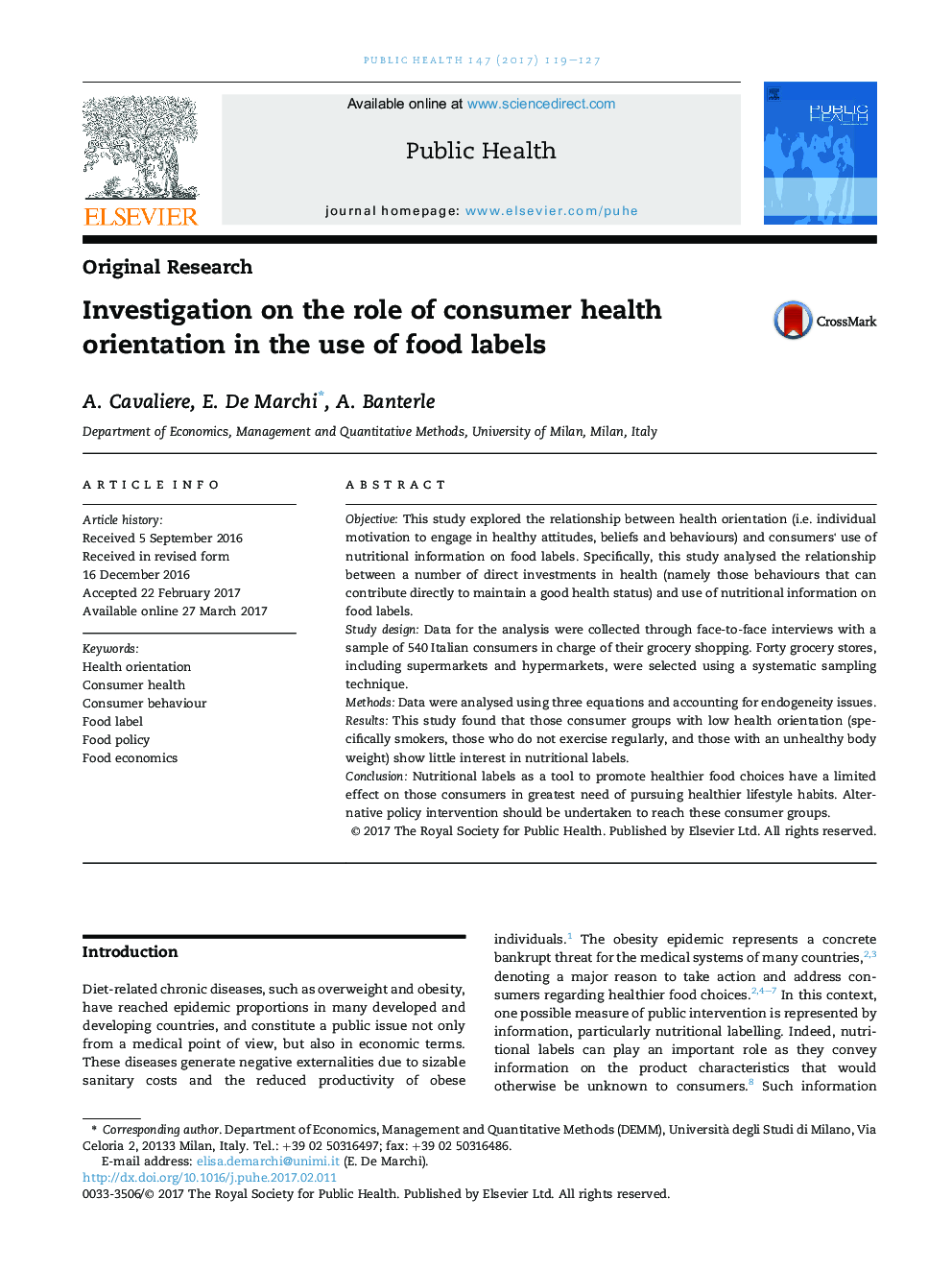| کد مقاله | کد نشریه | سال انتشار | مقاله انگلیسی | نسخه تمام متن |
|---|---|---|---|---|
| 5123000 | 1487196 | 2017 | 9 صفحه PDF | دانلود رایگان |
- The relationship of health orientation to nutrition label use frequency is explored.
- Data were collected through face-to-face interviews of 540 Italian consumers.
- Data were analysed through regression analysis.
- Highly health-oriented consumers use nutrition labels more frequently.
- Limited effect of nutrition labels on consumers that mostly would need to use it.
ObjectiveThis study explored the relationship between health orientation (i.e. individual motivation to engage in healthy attitudes, beliefs and behaviours) and consumers' use of nutritional information on food labels. Specifically, this study analysed the relationship between a number of direct investments in health (namely those behaviours that can contribute directly to maintain a good health status) and use of nutritional information on food labels.Study designData for the analysis were collected through face-to-face interviews with a sample of 540 Italian consumers in charge of their grocery shopping. Forty grocery stores, including supermarkets and hypermarkets, were selected using a systematic sampling technique.MethodsData were analysed using three equations and accounting for endogeneity issues.ResultsThis study found that those consumer groups with low health orientation (specifically smokers, those who do not exercise regularly, and those with an unhealthy body weight) show little interest in nutritional labels.ConclusionNutritional labels as a tool to promote healthier food choices have a limited effect on those consumers in greatest need of pursuing healthier lifestyle habits. Alternative policy intervention should be undertaken to reach these consumer groups.
Journal: Public Health - Volume 147, June 2017, Pages 119-127
